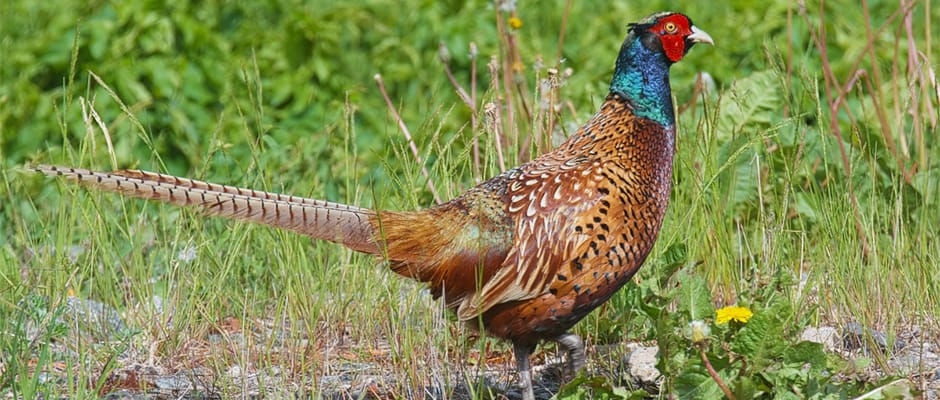Share this article
TWS Member: Nebraska Pheasants Decline Despite Conservation Program
Despite the implementation of the Conservation Reserve Program (CRP), a Farm Bill funded program to improve soil and restore perennial grass cover, pheasants (Phasianus colchicus) that rely on the grass are still decreasing in population, according to a recent study.
While the literature shows that the CRP benefits pheasants, researchers wanted to determine how the birds have actually been faring since the mid-1950s until recently. In their study published in The Wildlife Society Bulletin, the team found that the population has dropped significantly since the mid-1950s, and continued to decline even after the CRP was put in place in 1986.
“The population was going down fast prior to 1986 and is still going down but at a much slower rate,” said Drew Tyre, a professor of wildlife population ecology at the School of Natural Resources at the University of Nebraska-Lincoln and a co-author in the study. “What that says is that the CRP did help with the negative effects but they were so extreme that it was insufficient to reverse the trend.”
As part of their study, Tyre and his team used the rural mail-carrier survey, one of the longest-running population time-series data sets in Nebraska. For these surveys that have been conducted since 1951, Nebraska Game and Parks Commission sends out three by five inch cards to volunteers that tell them where to record certain wildlife that they observe. The volunteers then put them in the mail and the researchers tally up the totals and record the information.
Tyre stressed the importance of using this volunteer-collected data. “Our motivation was that no one had looked at these big data sets,” said Tyre, a member of The Wildlife Society. Using that data, Tyre and his team determined that despite long-term declines in prairie birds that the surveys showed, CRP is a useful program to help keep them on the landscape — especially since the birds rely on perennial grass for nesting, foraging, hiding from predators, rearing their chicks and for other things.
However, now, with a big spike in corn prices and low corn production, more farmers are allowing their CRP contract to lapse and are turning back to growing corn. Based on their study, Tyre predicts that this means the number of pheasants will decline further. And to remedy the situation, corn prices need to go back down or Congress would have to authorize larger sums of money for the Farm Bill as an incentive to keep farmers interested, he said.
But Tyre said that once the corn prices go down, they have to be ready to jump in and grab the farmers’ attention regarding conservation issues. “I hope as a profession, we’re ready when that bubble bursts,” he said. “Thinking ahead, we have to think ‘what am I going to do when land prices come down to get their attention in alternative ways to generate income on the land?”
Header Image: A common pheasant stands amidst grass. Image Credit: Stefan Berndtsson, licensed by cc 2.0








